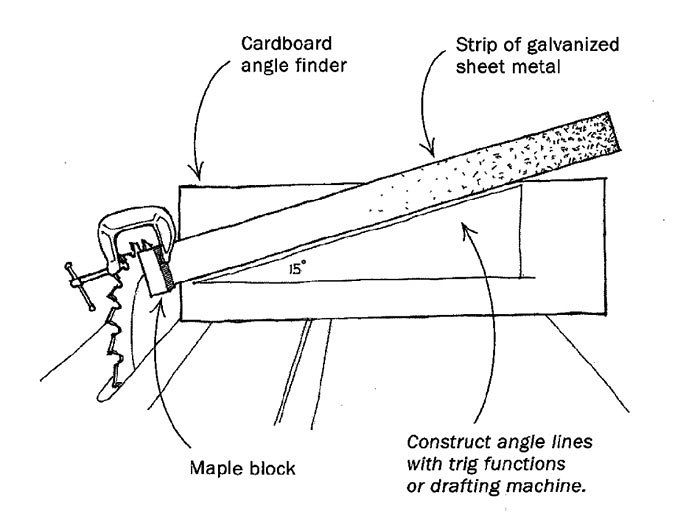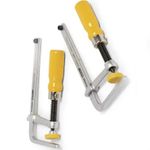A Jig to Set Accurate Saw Angles

When I wanted to make a segmented cylinder on my tablesaw, I discovered the importance of setting the blade at the exact tilt angle. But the tilt scales provided on the saw are imprecise at best. So I developed this technique that, if carefully done, will produce a blade-tilt angle accurate to within one one-hundredth of a degree.
The key to this technique is a flat, parallel strip of 22-gauge, galvanized sheet metal, about 1 in. or so wide and 10 in. long. Add epoxy, and screw the strip to a 1/2-in.-sq., 1-in.-long block of hard maple. The accuracy of the final sawblade setting is directly proportional to how square the wood block is to the edge of the metal strip, so take care when fastening them together.
To use this device, crank up the blade partway, and then clamp it onto the blade with a small C-clamp. Be sure to clamp the wooden part to a flat, clean area of the blade, avoiding any carbide teeth that are thicker. The metal strip serves as an indicator: The angle at which it is inclined is an accurate gauge of the tilt angle of the blade.
For each desired angle setting, make up an angle finder from a piece of cardboard. Scribe the desired angle on the cardboard using a drafting machine, or construct the angle using trigonometric functions and a calculator. Place the cardboard finder behind the gauge, and then tilt the blade until the angle matches the line on the finder.
Helmut Wolf, Albuquerque, N. Mex.
Fine Woodworking Magazine, August 1998 No. 131

Fine Woodworking Recommended Products

Incra Miter 1000HD

MicroJig Matchfit dovetail clamps

Double Sided Tape






















Log in or create an account to post a comment.
Sign up Log in